Special Report
Most Popular Stores for Millennials

Published:
Last Updated:

The 18 to 34 age demographic has long been the holy grail for advertisers and brands. Young adults are thought to have more disposable income and the potential to develop brand loyalty that will last a lifetime. Today, the millennial generation largely comprises this coveted consumer demographic.
Millennials, as defined by Pew Research Center, were born between 1981 and 1996 and range in age from 22 to 37. The millennial generation has been the subject of endless scrutiny and analysis — and the conclusions are sometimes unflattering and often controversial. While sweeping characterizations about a group of Americans totalling 75 million are bound to be flawed, they often reflect some broad trends.
For example, millennials have largely been shown to be receptive to certain values, including transparency and authenticity. They are also demonstrably more likely to delay certain major life milestones such as homeownership and marriage. Growing up with technology, they are also more technologically and socially connected than any previous generation.
Each of these traits can impact consumer behavior and brands able to recognize them were able to achieve a competitive edge in resonating with today’s young adults. Additionally, just by falling into a certain age range, millennials are more likely to be drawn to certain kinds of stores than other age groups.
24/7 Wall St. reviewed foot traffic patterns provided by data service company Placed Insights to identify the most popular stores for millennials. Brands were ranked based on an index score reflecting the likelihood that a consumer in the 18 to 34 age range would shop there compared to the general consumer population as a whole.
While some experts warn of a coming “retail apocalypse” due to the rising popularity of e-commerce, a considerable share of millennials prefer the brick-and-mortar shopping experience. Indeed, the vast majority of the stores on this list are staples in shopping malls nationwide.
Click here to see the most popular stores for millennials.
Click here to see our detailed findings and methodology.
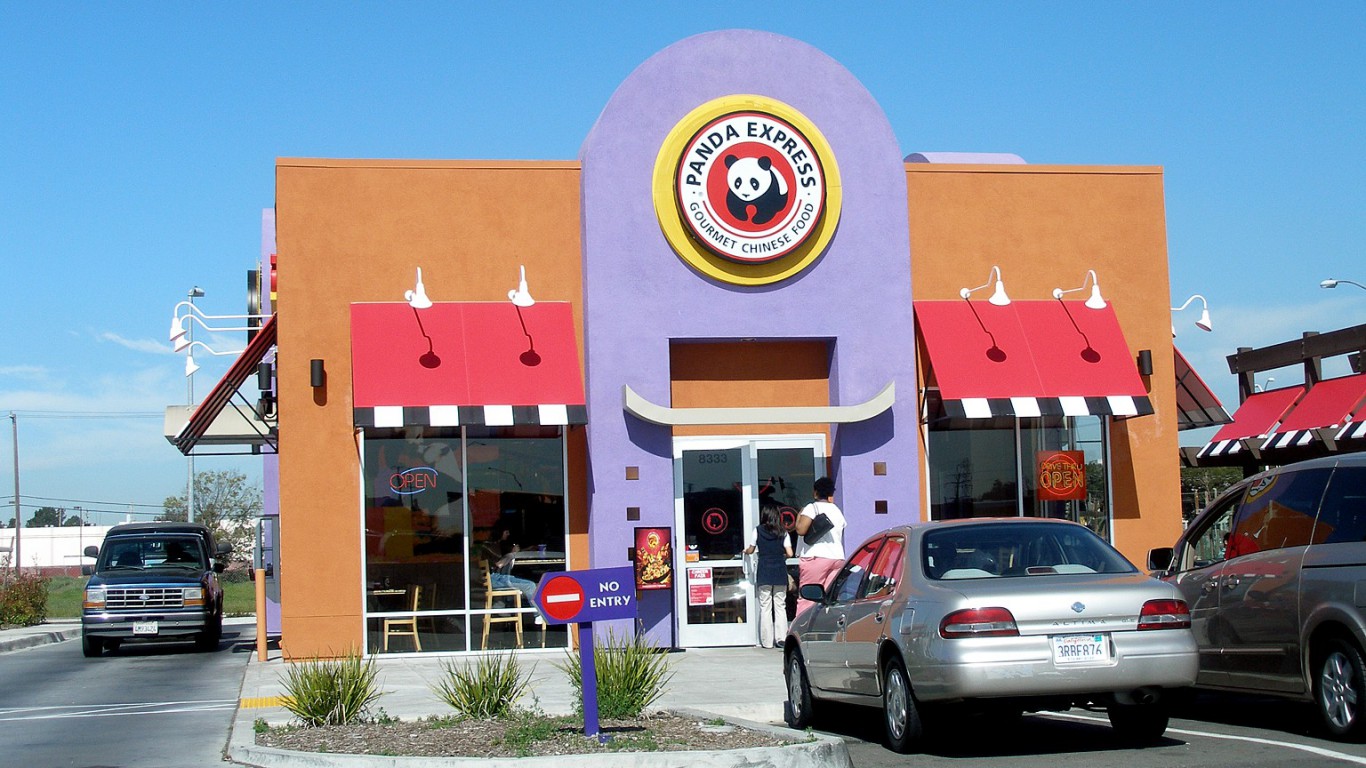
20. Panda Express
> Popularity among millennials: 9% more popular than all ages
> U.S. locations: 1,900+
> Revenue: $2.9 billion
According to a recent study conducted by the U.S. Department of Agriculture, millennials — those born any year from 1981-1996 — are about 30% more likely eat in bars or restaurants than any other generation. And Panda Express is one of five restaurants or specialty food stores on this list to benefit from this trend. Data from Placed Insights reveals that Americans in the 18 to 34 age demographic — mostly millennials — are about 9% more likely to eat at the Chinese American restaurant chain Panda Express than the general consumer population as a whole.
[in-text-ad]
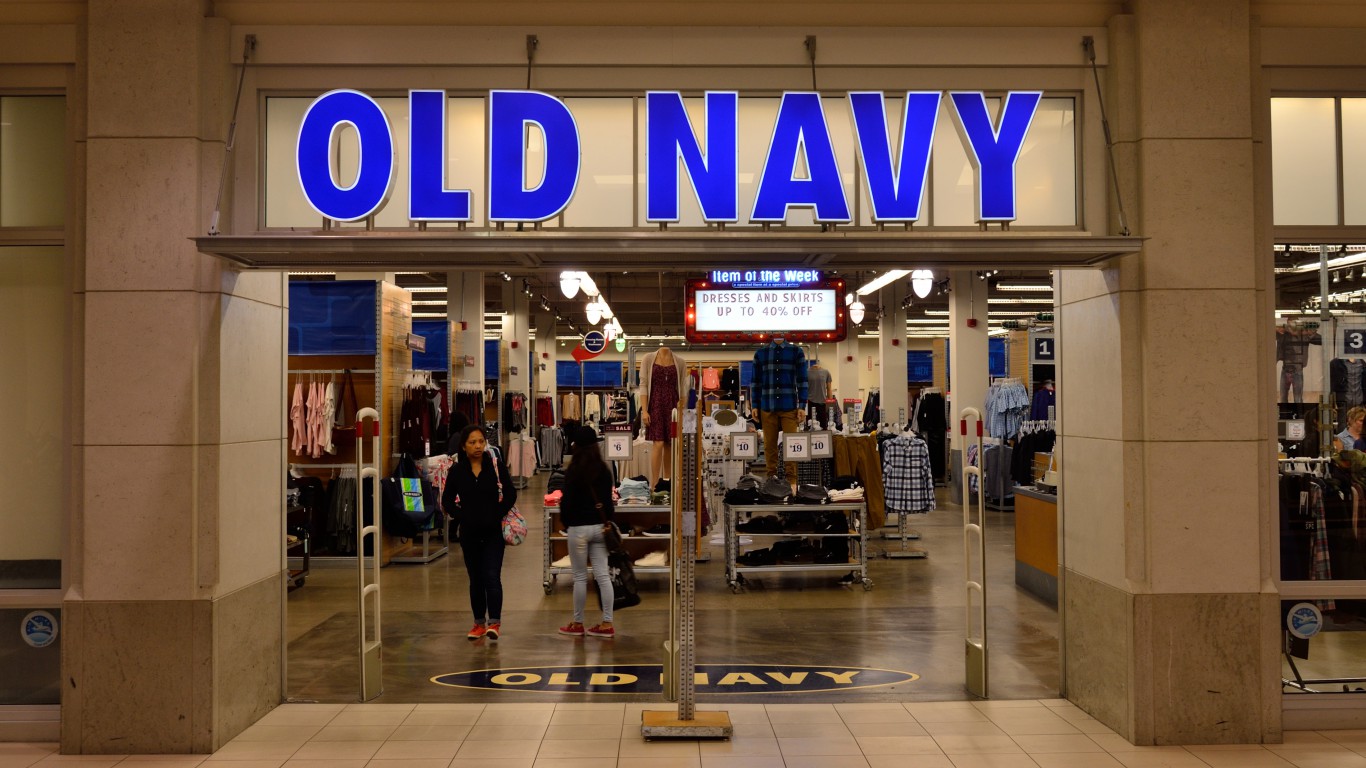
19. Old Navy
> Popularity among millennials: 10% more popular than all ages
> U.S. locations: 1,043 (North America)
> Revenue: $6.1 billion (parent company)
Old Navy is the most lucrative brand under the Gap Inc. corporate umbrella, accounting for some 45.7% of the company’s annual revenue. The popular clothing chain sells contemporary styles at value prices and is the first retailer to have reached $1 billion in annual sales within four years of opening. Young adults account for an outsized share of Old Navy’s business. Those in the 18 to 34 age demographic are 10% more likely to shop at Old Navy than the general public.
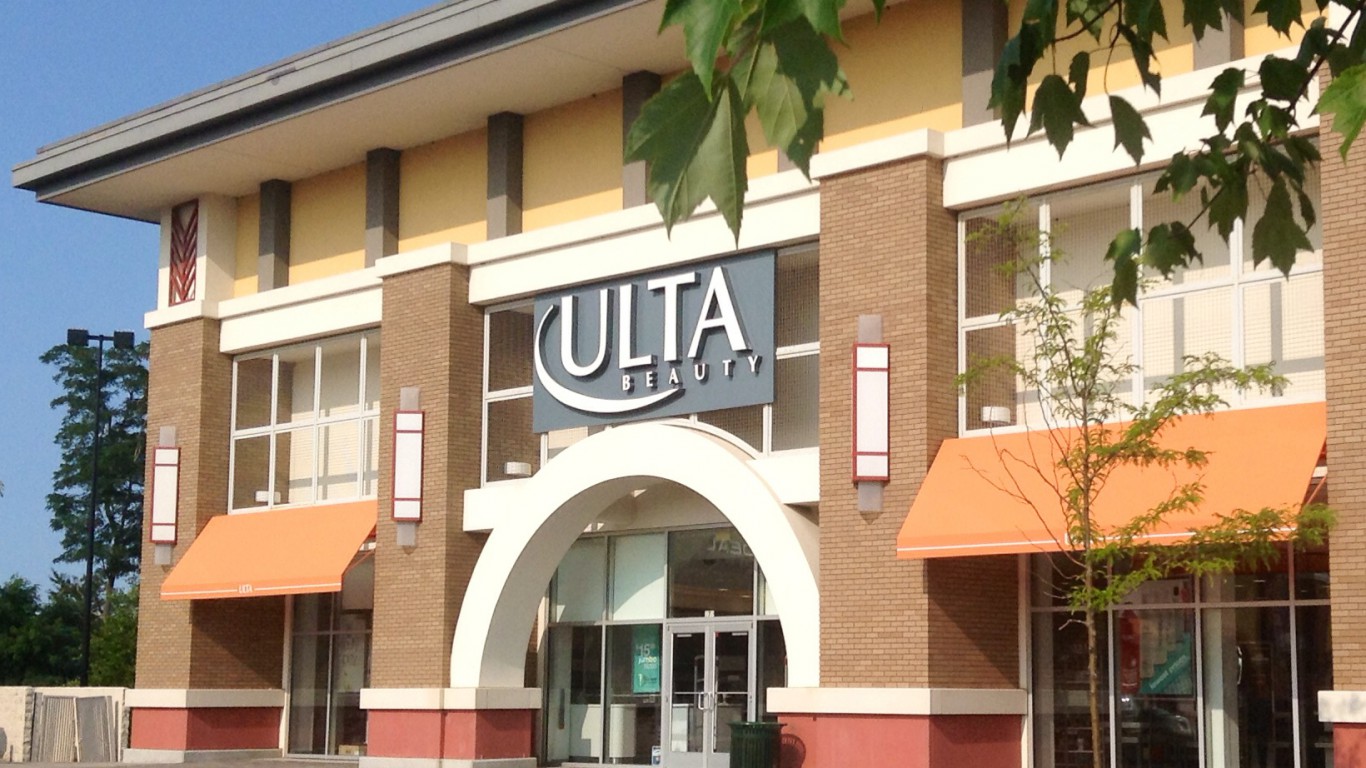
18. Ulta
> Popularity among millennials: 11% more popular than all ages
> U.S. locations: 1,074
> Revenue: $5.9 billion
Beauty product retailer Ulta sells a range of products, including cosmetics, salon tools, and fragrances and offers salon, skin, and hair services. Those in the 18 to 34 age demographic are about 11% more likely to visit an Ulta location than the consumer population as whole.
Millennials may be more obsessed with their physical appearance than previous generations. According to a recent poll conducted by the Pew Research Center, 55% of millennials have shared a selfie, more than double the 26% share of all Americans. Ulta may be benefiting from these millennial trends of selfie-taking and social media sharing. The company has opened about 100 new stores annually in recent years and has been reaching its target demographic through ad-campaigns on social media platforms.

17. Dick’s Sporting Goods
> Popularity among millennials: 11% more popular than all ages
> U.S. locations: 715
> Revenue: $323.4 million
Sports equipment is an industry worth tens of billions of dollars, and Dick’s Sporting Goods is able to capture a portion of the market with a footprint of over 700 stores across 47 states. Young adults account for a disproportionate share of the company’s business as those in the 18 to 34 age demographic are about 11% more likely to shop at Dick’s than the typical American consumer.
Several trends can help explain the store’s popularity among younger shoppers. According to the Centers for Disease Control and Prevention, millennials fall within the age range of adults most likely to engage in physical activity — including sports and fitness training. Additionally, as athleisure wear — defined as clothing designed for exercise and general use — has gained traction among the fashion conscious, Dick’s market has expanded beyond athletes and outdoor types.
[in-text-ad-2]
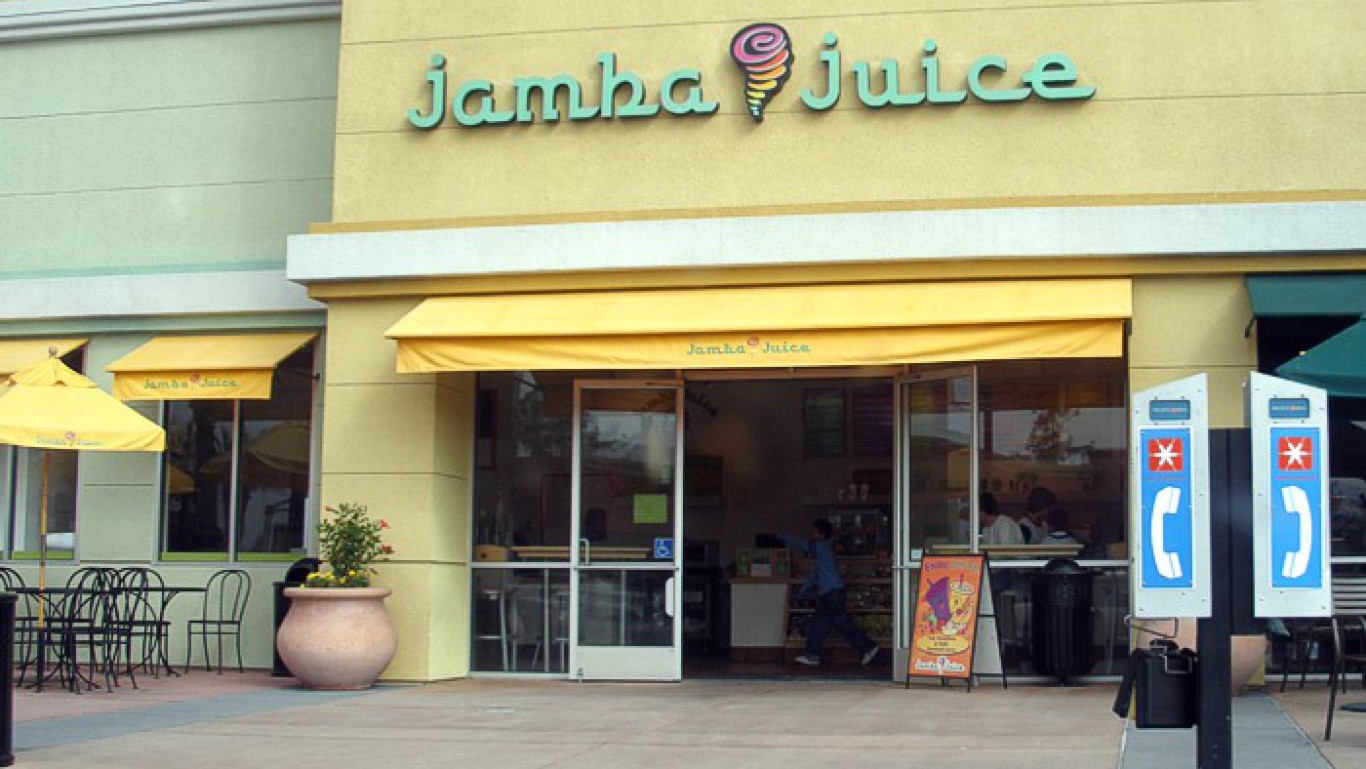
16. Jamba Juice
> Popularity among millennials: 11% more popular than all ages
> U.S. locations: 802
> Revenue: $70.9 billion
According to Nielsen’s Global Health and Wellness Report, 33% of millennials think that healthy attributes in foods are very important, more so than any other age group. Healthy attributes include freshness and natural ingredients in food that is minimally processed and free of GMOs. Jamba Juice in particular likely benefits from this trend among millennials. Data from Placed Insights shows that Americans ages 18 to 34, are about 11% more likely to eat at smoothie chain Jamba Juice, which bills itself as health conscious, than the general consumer population.
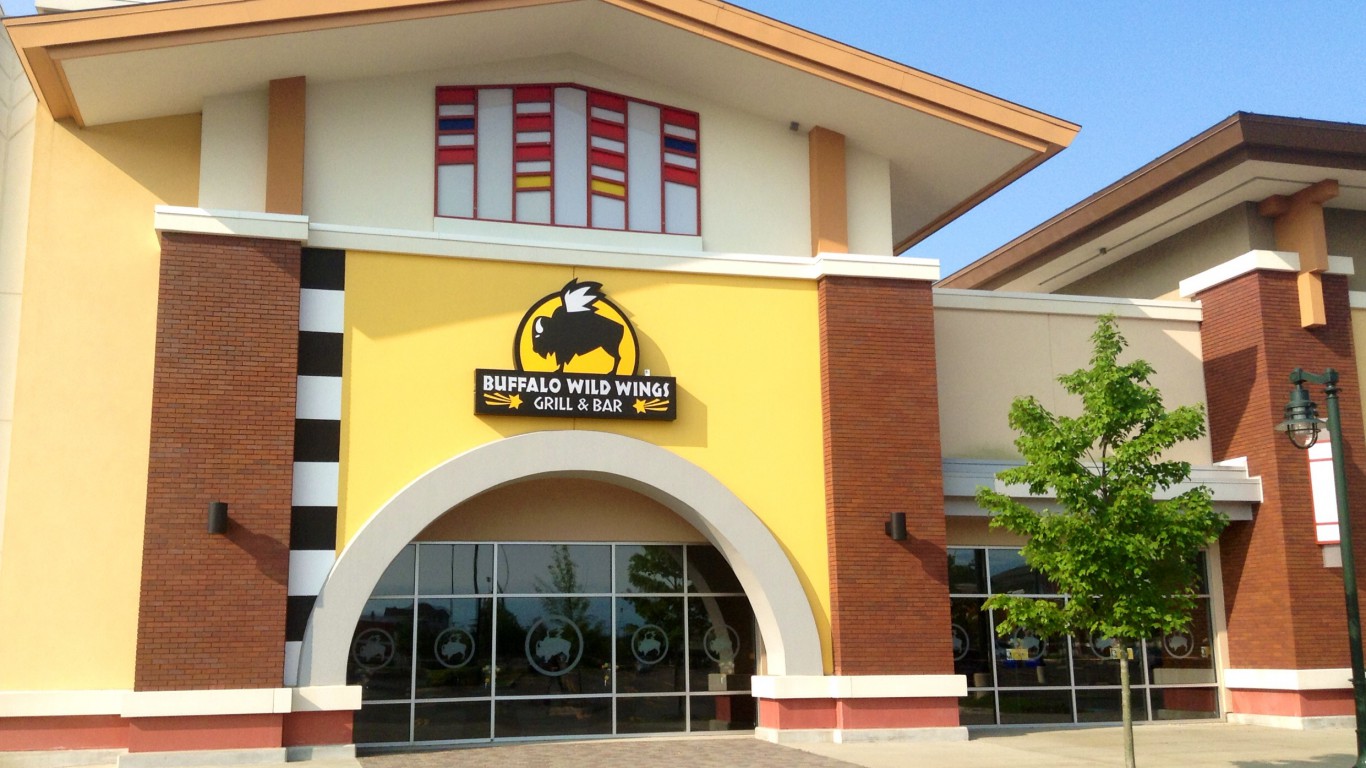
15. Buffalo Wild Wings
> Popularity among millennials: 12% more popular than all ages
> U.S. locations: 1,240 (worldwide)
> Revenue: $2.0 billion
Of all American adults, millennials spend the least amount of money on groceries, or food to eat at home, according to a study conducted by the USDA in 2017. Millennials are also 30% more likely to eat in bars or restaurants than any other generation, according to the same report. Both of these trends may help explain Buffalo Wild Wings’ popularity among young adults. Americans ages 18 to 34 are 12% more likely to eat at the sports bar and restaurant Buffalo Wild Wings than the general population as a whole.
[in-text-ad]
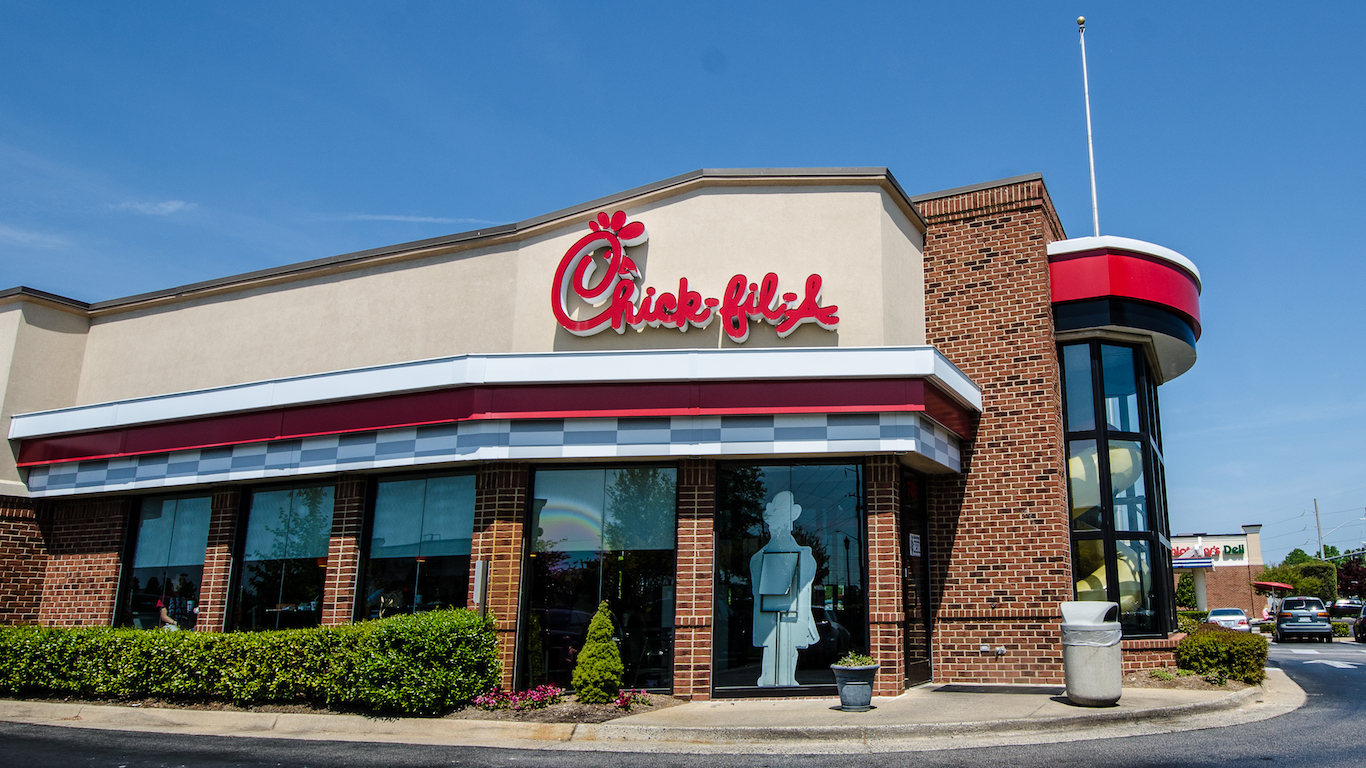
14. Chick-fil-A
> Popularity among millennials: 12% more popular than all ages
> U.S. locations: 2,200+
> Revenue: $9.0 billion+
According to a report from the USDA millennials are more likely to eat in restaurants than any other generation. Chick-fil-A is one of five restaurants on this list to benefit from this trend. Adults ages 18 to 34 are 12% more likely to eat at Chick-fil-A than the general consumer.
Like several other stores especially popular with young adults, Chick-fil-A has taken on philanthropic initiatives, including providing nearly 20,000 meals to those in need in the Atlanta metro area. Additionally, Chick-fil-A employees logged over 6,300 volunteer hours in 2017 alone.
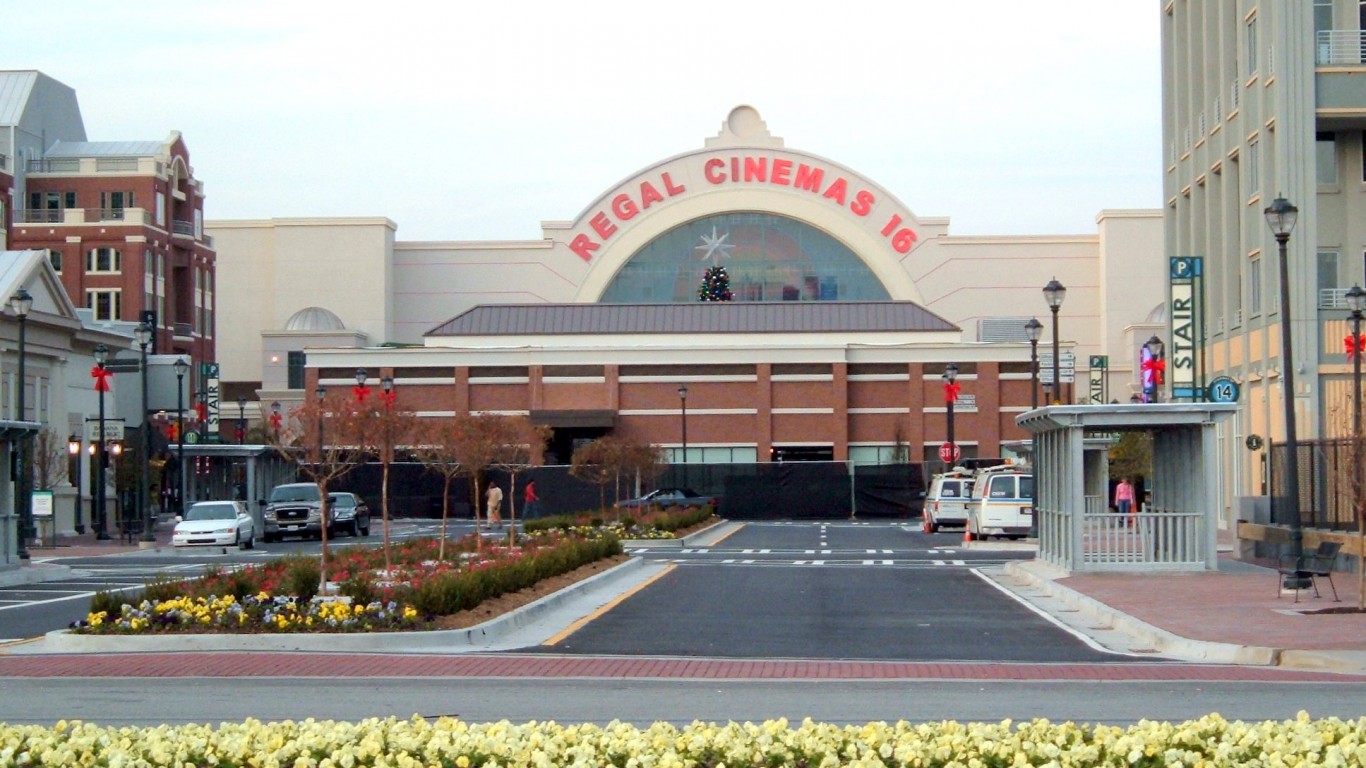
13. Regal Cinema
> Popularity among millennials: 14% more popular than all ages
> U.S. locations: 569
> Revenue: $3.1 billion (parent company)
Box office admissions in the United States and Canada hit a multi-decade year low in 2017. An estimated 1.24 billion tickets were sold, the fewest since 1992. Industry experts point to several causes, including a growing number of in-home video-streaming options, such as Netflix, HBO Go, and Hulu. Additionally, the average cost of a movie ticket is at an all time high.
Despite the industry’s unique challenges, young adults still appear willing — or at least slightly less dissuaded — to pay top dollar to see new releases on the big screen. Americans in the 18 to 34 age range are 14% more likely to see a movie in a Regal Cinema theater than the typical consumer.

12. Macy’s
> Popularity among millennials: 14% more popular than all ages
> U.S. locations: 852
> Revenue: $24.9 billion
Macy’s is one of the most advertised brands in the United States. The department store chain spent $1.4 billion on advertising in 2017 — over half of which was through television. TV is still the most consumed video media among both millennials and older Americans alike.
Young adults are about 14% more likely to shop at a Macy’s department store than the typical consumer. Though Macy’s offers a range of products in homegoods, younger shoppers are likely sticking to the apparel department. Millennials are increasingly choosing to delay homeownership as just 47.7% of the 18 to 34 demographic are homeowners, down from 53.3% in 2006, and homegoods account for just 16% of the company’s sales.
[in-text-ad-2]

11. Gap
> Popularity among millennials: 15% more popular than all ages
> U.S. locations: 810 (North America)
> Revenue: $15.9 billion (parent company)
Gap is a sub-brand of parent company Gap Inc., which also owns Old Navy and Banana Republic. The Gap brand accounts for just over a third of the company’s total revenue, and young adults likely account for a disproportionate share of those sales. Americans in the 18 to 34 age demographic are 15% more likely to shop at Gap than the general population.
Like several other brands on this list, Gap visibly engages in socially conscious initiatives that likely appeal to many young American adults. The company lists improving factory conditions, sustainable sourcing of products, and reducing its factories’ greenhouse gas emissions among its initiatives.
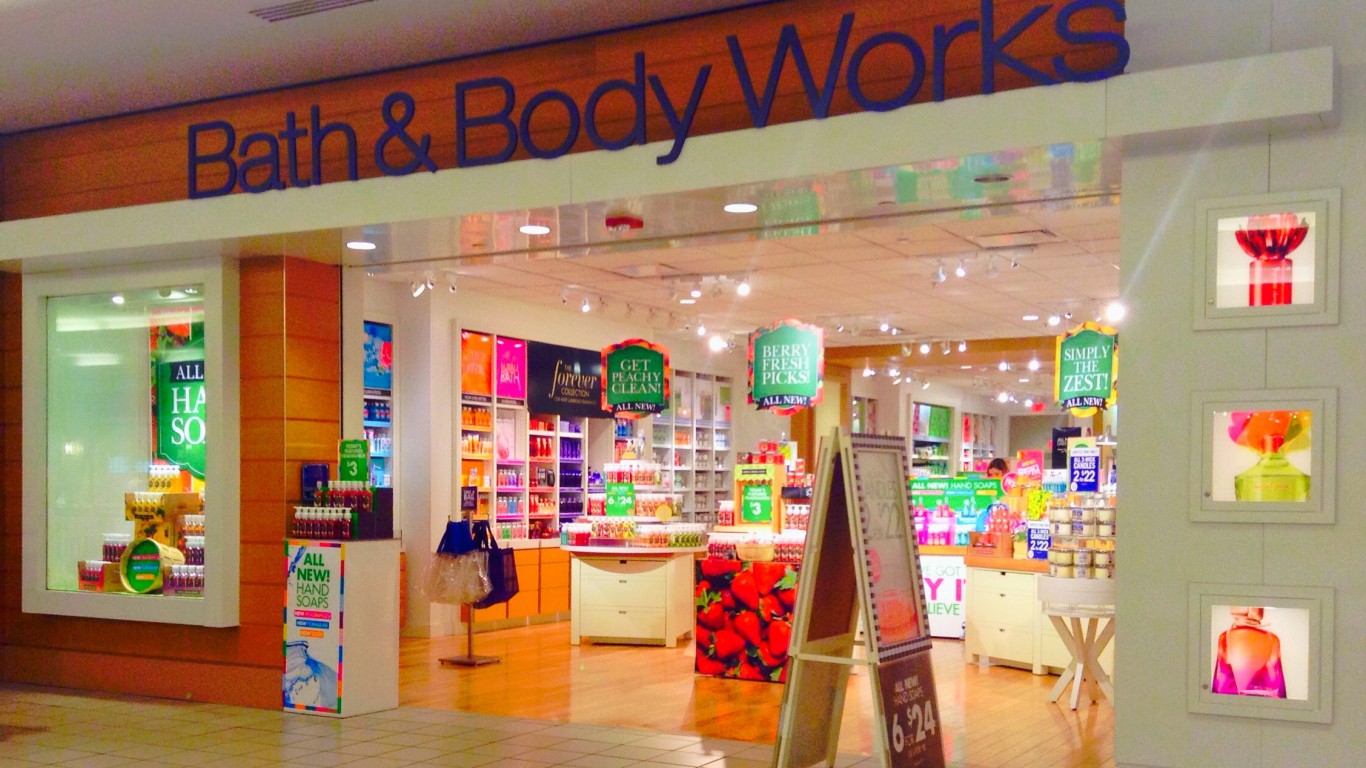
10. Bath And Body Works
> Popularity among millennials: 15% more popular than all ages
> U.S. locations: 1,591
> Revenue: $995.0 million (parent company)
One of two specialty retailers under the L Brands umbrella on this list, Bath And Body Works specializes in personal care, selling soaps, lotions, home fragrances, and body care accessories. Young adults are 15% more likely to shop at Bath And Body Works than the general consumer population. The store’s popularity among the 18 to 34 age demographic may partially explain its growth in recent years. The brand’s overall sales climbed 8% in 2017, and the company is building about 30 new North American stores in 2018.
[in-text-ad]
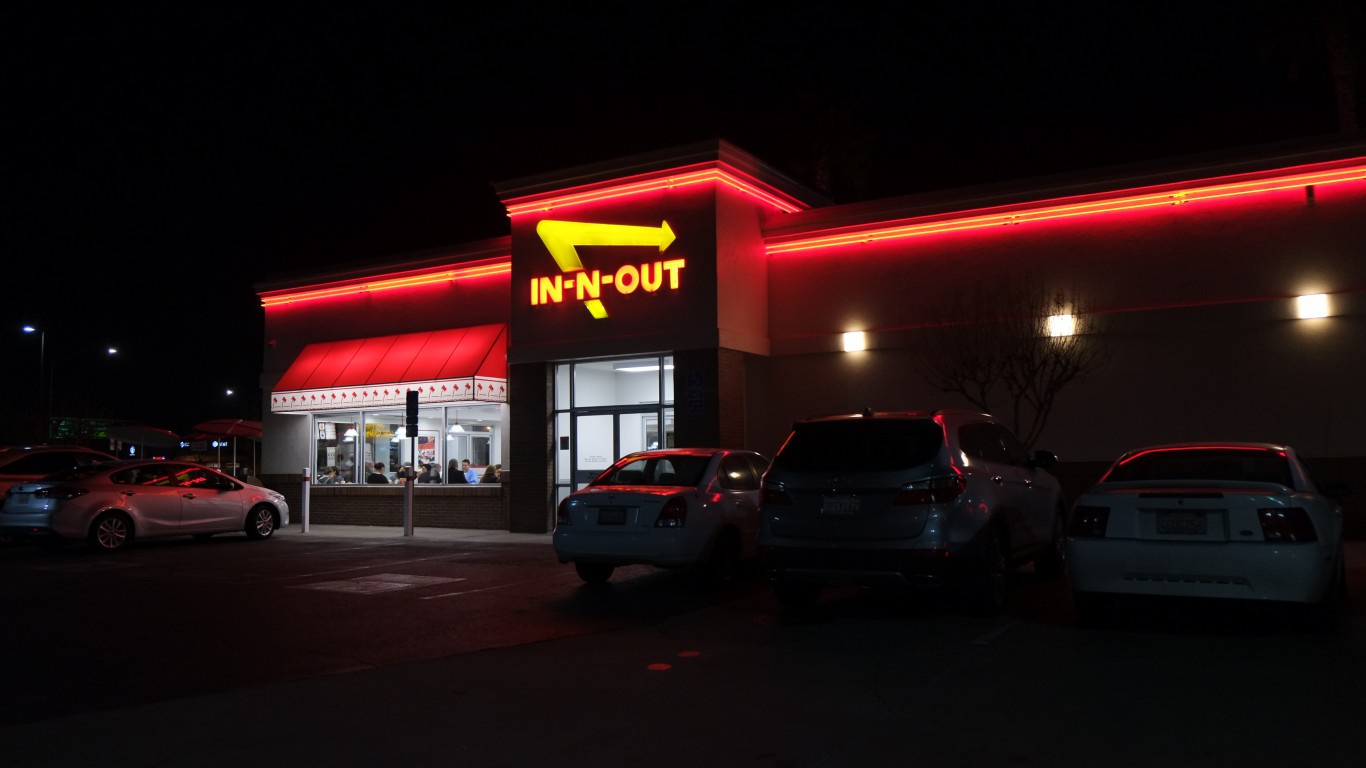
9. In-N-Out Burger
> Popularity among millennials: 17% more popular than all ages
> U.S. locations: 336
> Revenue: N/A
In-N-Out Burger is a fast food chain found in only six states — all west of the Mississippi River. Despite its limited regional reach, the franchise ranks among the most popular stores in the country among young adults. Those in the 18 to 34 age demographic are 17% more likely to eat at In-N-Out Burger than the general population as a whole.
Multiple marketing studies have identified authenticity and transparency among the attributes millennials value most as consumers, and that may explain In-N-Out Burger’s success with the demographic. The company famously uses no freezers, microwaves, heat lamps, or prepackaged food — opting instead to butcher its own beef, bake its own buns, and receive produce directly from the farm.
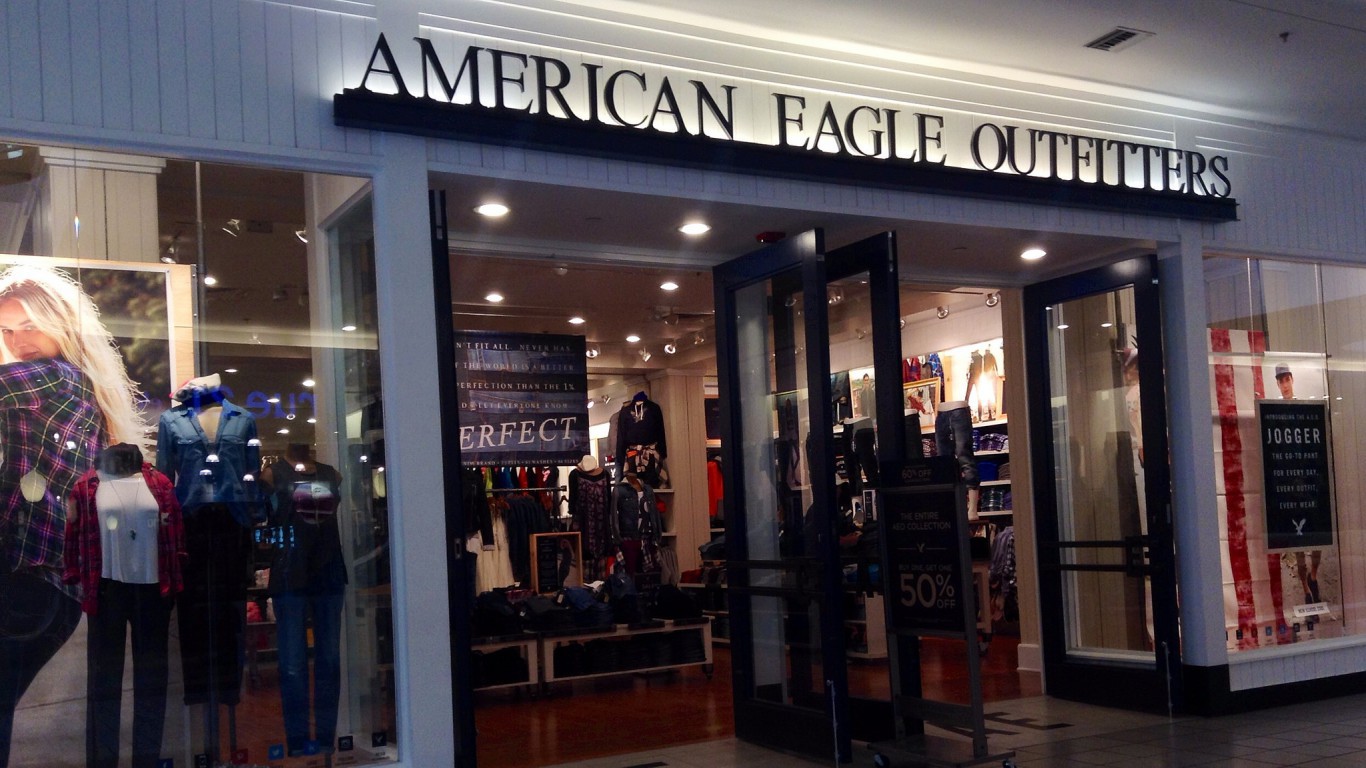
8. American Eagle Outfitters
> Popularity among millennials: 18% more popular than all ages
> U.S. locations: 802
> Revenue: $3.8 billion
According to a recent study, millennials check their phones up to 150 times a day. With young adults’ receptivity to digital content, companies are more inclined to boost their digital advertising presence. American Eagle Outfitters, which caters to a young audience, is one example. Over the past several years, the clothing company has invested in omni-channel marketing and retail to improve the overall online customer experience and ultimately draw more customers to the brand.
Adults ages 18 to 34 are 18% more likely to shop at American Eagle than the general population.
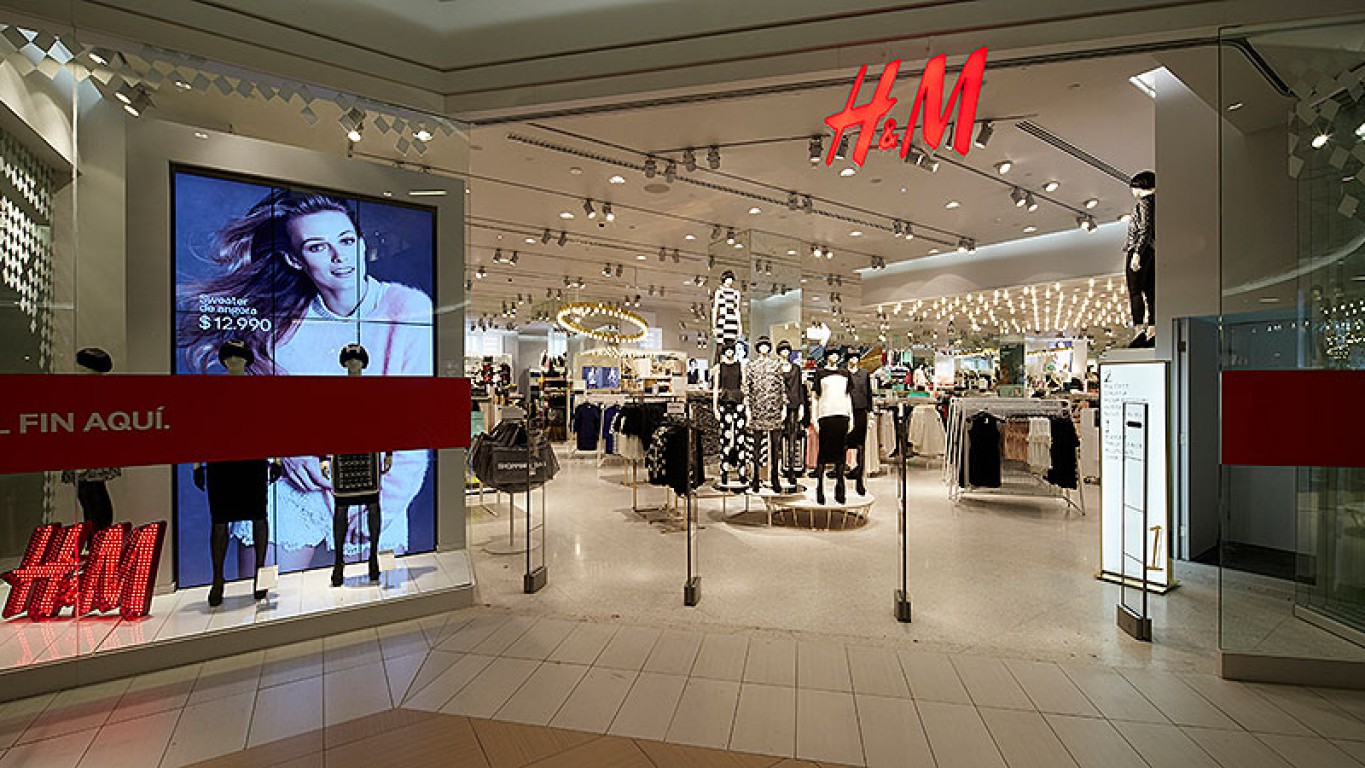
7. H&M
> Popularity among millennials: 19% more popular than all ages
> U.S. locations: 4,328 (worldwide)
> Revenue: $200.0 billion
According to a study conducted by Nielsen, millennials are willing to pay more for a product that was sourced or manufactured through sustainable means. Nearly 75% of millennial survey respondents said they would pay more for such products. Swedish clothing retailer H&M is catering to these tastes. Earlier this year, H&M released the latest edition of a clothing line, made entirely of regenerated nylon fiber and recycled silver. The effort is the latest in a decades-long sustainability initiative. Adults between the ages of 18 and 34 are 19% more likely than the general population to shop at H&M.
[in-text-ad-2]
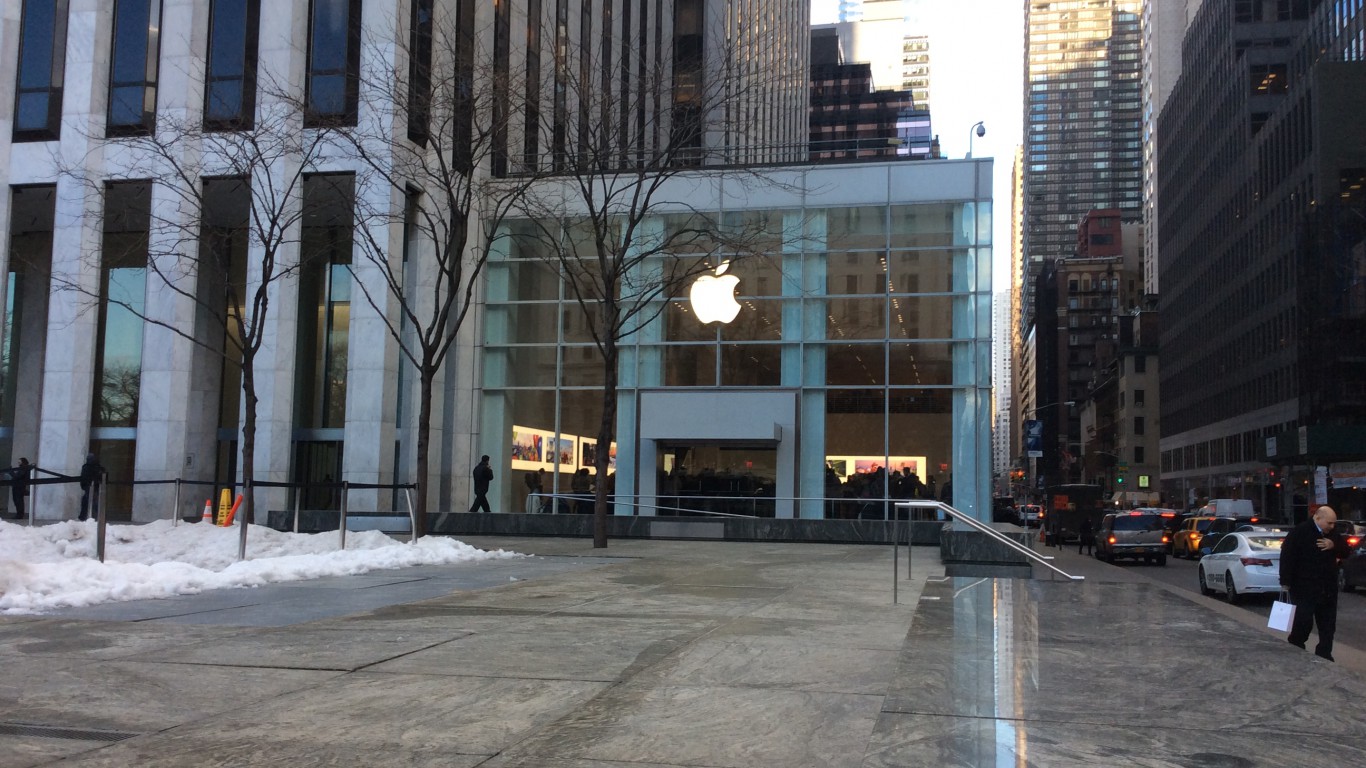
6. Apple Store
> Popularity among millennials: 20% more popular than all ages
> U.S. locations: 272
> Revenue: $229.2 billion
A recent study conducted by MBLM, a self-described brand intimacy agency, found that millennials have a stronger emotional attachment to Apple than any other brand. And emotional attachment can often lead to brand loyalty. Indeed, young adults are 20% more likely to shop at Apple than the general consumer population.
The greater likelihood of younger Americans to shop at Apple may also be due to their more widespread adoption of consumer electronics. With few exceptions, marketing efforts of tech companies like Apple have largely ignored the specific needs of older consumers, targeting the mass market instead.

5. Aeropostale
> Popularity among millennials: 22% more popular than all ages
> U.S. locations: N/A
> Revenue: N/A
Adults ages 18 to 34 are 22% more likely to shop at Aeropostale than the general population. Just because millennials are more likely to shop at Aeropostale than the general public does not mean the store is especially popular. The clothing retailer has long struggled to maintain a profit, and filed for Chapter 11 bankruptcy protection in 2016. It has since left bankruptcy under new ownership.
Like many stores on this list, Aeropostale is a staple in shopping malls nationwide, which helps explain its popularity with millenials.
[in-text-ad]

4. AMC
> Popularity among millennials: 24% more popular than all ages
> U.S. locations: 1,014
> Revenue: $5.1 billion (parent company)
Movie ticket prices are at an all time high and attendance is at a multi-decade low as streaming services like Netflix, HBO Go, and Hulu are cutting into box office sales. AMC is faring better than most movie theatre companies however. The company has recently taken initiatives to improve the movie-going experience, including revamping theater seating. AMC’s $5.1 billion in annual revenue is up from $3.2 billion in 2016 and $2.9 billion in 2015. Young adult movie-goers likely account for a considerable share of the company’s revenue. Adults between the ages of 18 and 34 are 24% more likely to visit the movie theater chain than the general consumer population.
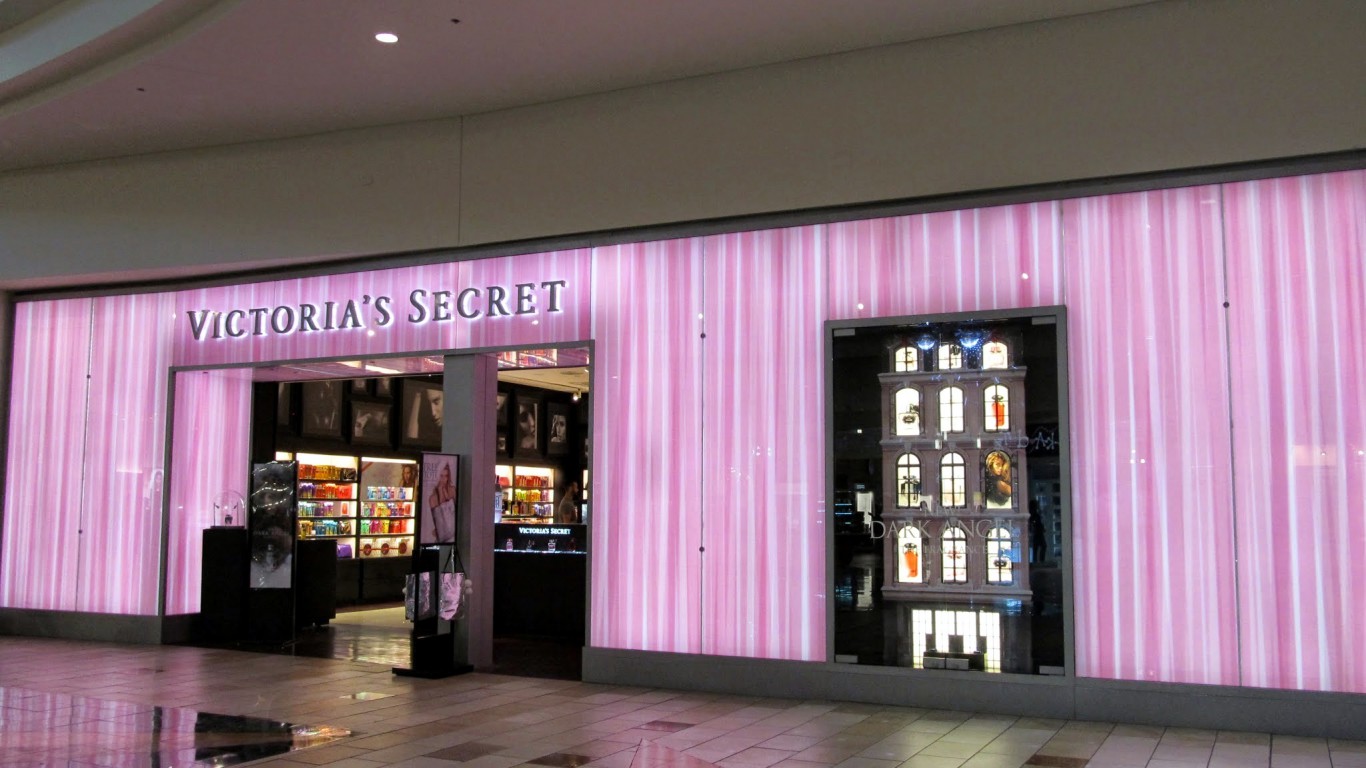
3. Victoria’s Secret
> Popularity among millennials: 25% more popular than all ages
> U.S. locations: 1,124
> Revenue: $995.0 million (parent company)
Victoria’s Secret is one of two specialty retailers under the L Brands umbrella on this list. The company sells a range of products including women’s lingerie, sleepwear, and sportswear as well as fragrances and beauty products. Victoria’s Secret has an impressive social media presence, particularly on the popular photo and video-sharing social network Instagram. Victoria’s Secret attracts 60.1 million followers on Instagram, actively promoting semi annual sales and new releases.
Adults ages 18 to 34 are 25% more likely than the typical consumer to shop at Victoria’s Secret — perhaps due to the company’s widespread social media presence. According to Pew Research Center’s “Social Media Use in 2018” study, some 71% of adults ages 18 to 24 use Instagram. According to another study, 72% of millennials report buying beauty and fashion products based on Instagram posts, which partially explains Victoria Secret’s success in attracting young adults.
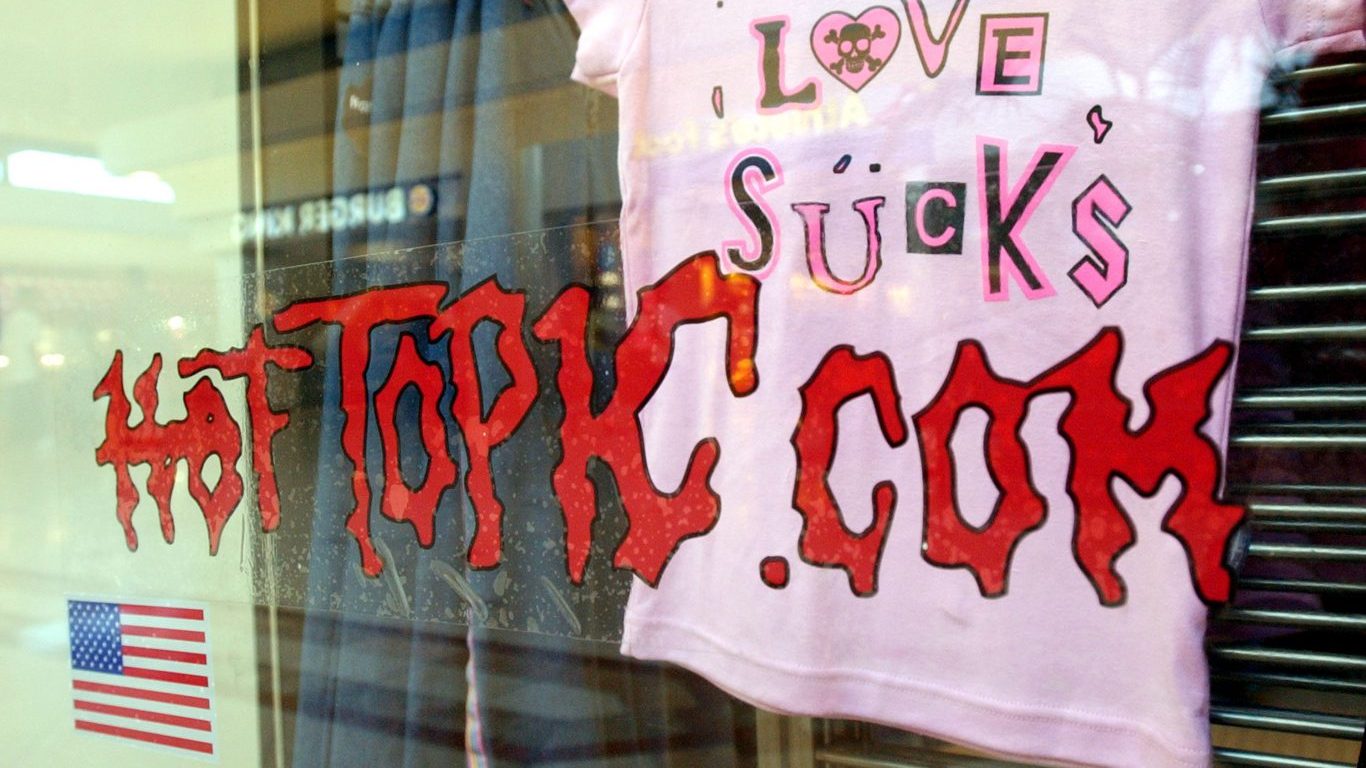
2. Hot Topic
> Popularity among millennials: 27% more popular than all ages
> U.S. locations: N/A
> Revenue: N/A
Adults ages 18 to 34 are 27% more likely to shop at Hot Topic than the general public. Indeed, many of the company’s products appear geared toward leveraging nostalgia among its millennial customers — be it a backpack with an old cartoon character like Scooby-Doo stamped on it or an article of clothing from the ’90s that is back in style. Like many stores on this list Hot Topic is a staple in malls across the country.
[in-text-ad-2]
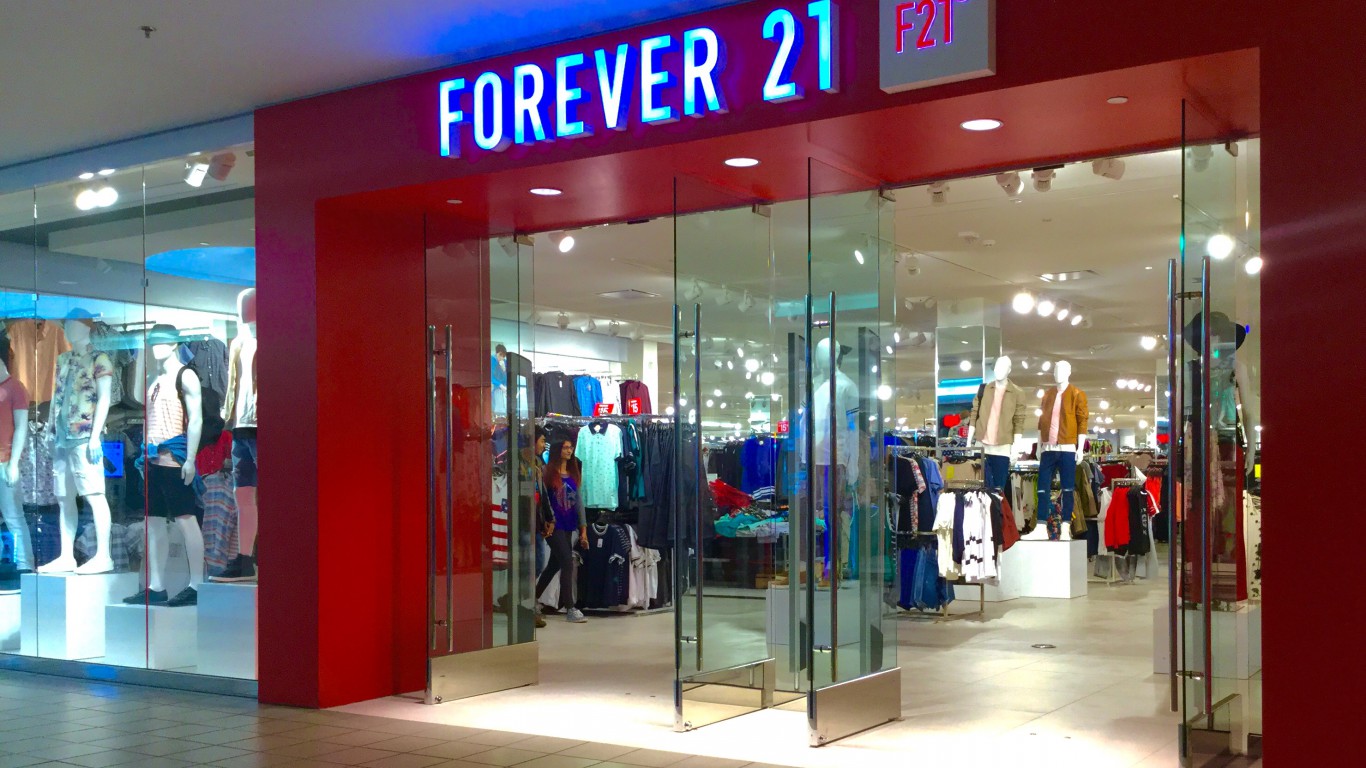
1. Forever 21
> Popularity among millennials: 33% more popular than all ages
> U.S. locations: N/A
> Revenue: N/A
Millennials tend to favor lower prices over brand loyalty. According to a recent study, two-thirds of millennials reported they would switch brands if a discount of 30% or more was offered. Adults between the ages of 18 to 34 are 33% more likely to shop at fashion giant Forever 21, a retail store known for its cheap clothing, shoes, and accessories, compared to all combined age groups. Young adults are likely drawn to Forever 21 for its low prices and regular discounts, even if quality of clothing is sacrificed as a result. One study suggests that younger millennial women in particular are drawn to Forever 2’s fast fashion business model — offering the fashion industry’s latest trends at an affordable price.
Detailed Findings and Methodology
A number of well-established traits of young American adults may help explain the brands that make up this list. For example, a recent study conducted by the U.S. Department of Agriculture found that millennials are about 30% more likely eat in bars or restaurants than any other generation. Restaurants also rank prominently on this list. Of the 20 most popular stores among young adults, five are either a restaurant or specialty food retailer.
While there are dozens of chain restaurants nationwide, those on this list — along with retailers in other industries — managed to distinguish themselves from the pack. For many, that means taking on social and environmental causes.
For example, Chinese American restaurant Panda Express donates food to those in need both locally and globally. Fast food chain Chick-fil-A sources its employee uniforms through sustainable practices. Clothing retailer Gap is working to reduce its company’s carbon footprint and improve working conditions in its factories.
Many of the companies on this list make themselves highly visible through massive advertising budgets. Companies like Apple, Macy’s, and The Gap Inc., have advertising budgets in the billions and hundreds of millions, and much of that spending goes to mediums widely consumed by millennials.
The difference in the types of companies on this list and those most popular among Americans 55 and older further highlights the shopping preferences of young adults. For example, six of the 20 most popular stores among older Americans are grocery stores or grocery wholesalers. Meanwhile, there are no grocers on this list.
To determine the nation’s most popular stores among millennials, 24/7 Wall St. reviewed data provided by data service company Placed Insights, which calculated the percentage of Americans 13 and older who visited various stores in May 2018. The shares of men and women visiting these stores also came from Placed Insights. Stores were ranked on the percentage likelihood that a shopper in the 18 to 34 age demographic would visit a store compared to the general consumer population. We also reviewed U.S. sales and store count data reported in recent company financial documents.
Thank you for reading! Have some feedback for us?
Contact the 24/7 Wall St. editorial team.